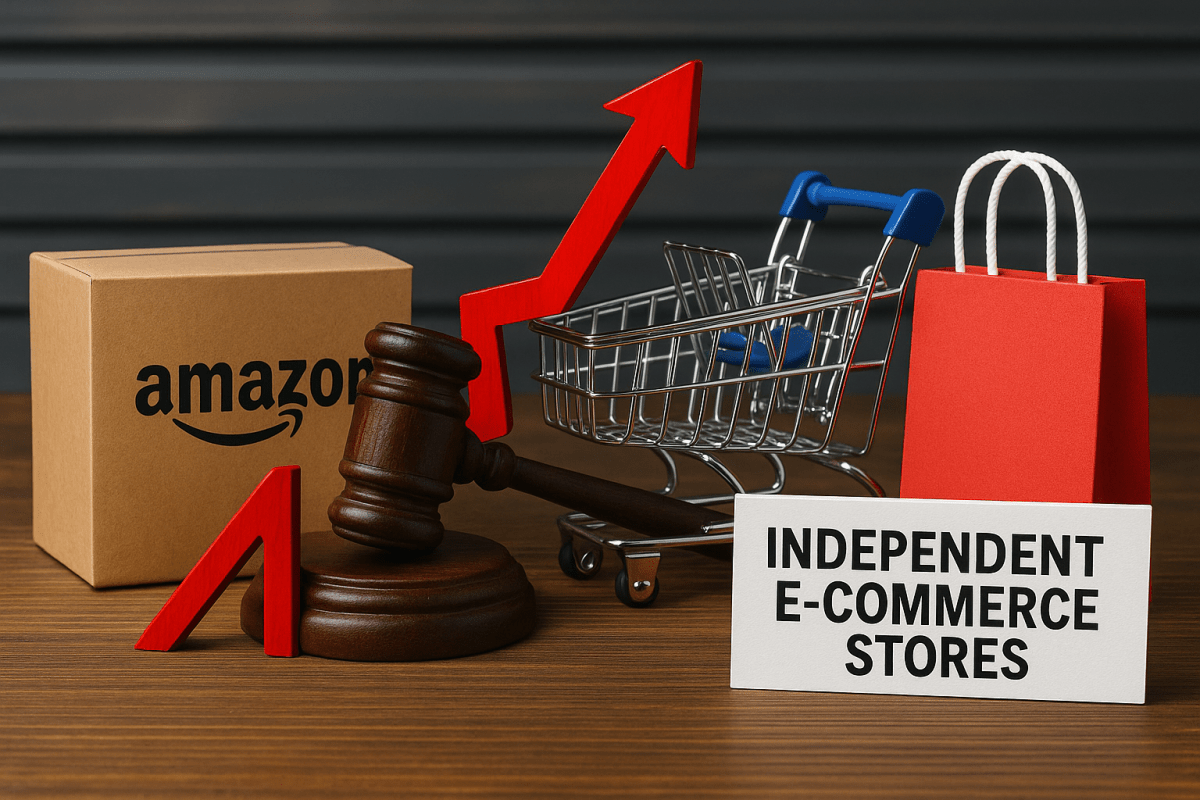Where Are the Better Deals Now?
Amazon vs. Independent E-Commerce Stores Under New Tariffs
With Trump's reinstated and expanded tariffs on Chinese imports—including tech, tools, electronics, and consumer goods—prices are rising fast. But not all sellers are affected equally. If you're wondering whether Amazon or independent e-commerce stores offer better value now, here's a breakdown that explains the key differences—and why independent stores are gaining an edge.
🔍 Key Differences: Amazon Sellers vs. Independent Stores (Post-Tariffs)
| Category | Amazon Sellers | Independent E-Commerce Stores |
|---|---|---|
| Tariff Impact | High exposure. Most sellers import from China and rely on Amazon's U.S. fulfillment centers (FBA), making them hit hardest by tariffs. | More flexible. Can source globally, stock inventory themselves, or shift to domestic suppliers faster. |
| Price Control | Limited. Sellers risk being penalized or losing the Buy Box if they raise prices too fast. | Complete freedom to adjust prices and offer custom discounts or bundles. |
| Customer Communication | Restricted. Cannot openly explain tariff-related price hikes on product pages. | Transparent. Independent sites can directly tell customers about cost changes or savings. |
| Fees | High. Amazon charges referral fees (up to 15%), FBA fees, and advertising costs, making it harder to absorb price increases. | Lower fees. Store owners avoid platform commissions and can pass on more savings. |
| Profit Margins | Shrinking. Sellers must either raise prices (and risk penalties) or eat the extra cost. | Easier to maintain. Owners can price creatively without platform restrictions. |
| Product Availability | Increasingly limited. Some sellers are pulling back from Amazon's Prime Day and reducing their inventory due to rising import costs. | More variety. Many smaller stores are actively shifting inventory sources or promoting domestic alternatives. |
| Shipping Speed | Fast, but fewer products qualify for Prime due to reduced inventory. | Varies. Some offer free shipping on a higher threshold, but the shipping may be slower, depending on the fulfillment method. |
🏆 So… Where Should Shoppers Go?
✅ Independent E-Commerce Stores Are Now More Competitive
Here's why:
-
Lower Tariff Exposure
Independent sellers can source products outside of China or work directly with lower-cost suppliers, thereby avoiding Amazon's strict fulfillment model. This agility gives them cost advantages that Amazon sellers can't match right now. -
More Pricing Freedom
Unlike Amazon sellers, who are subject to automated pricing limits, independent stores can adjust prices with complete control, offer loyalty perks, or provide custom bundles without penalty. -
Fewer Platform Fees
Amazon sellers often operate on thin margins due to platform fees. Independent stores don't pay referral or FBA fees, allowing them to offer better value and promotions directly to shoppers. -
Transparent Communication
Smaller stores can tell you exactly why prices changed and where your order is coming from. That builds trust, especially when tariffs are causing uncertainty. -
Better Adaptation to Supply Chain Changes
Many independent stores are moving faster to local or tariff-free sourcing, while Amazon sellers are still tied to large-scale fulfillment systems that can't pivot quickly.
🧾 Bottom Line
Due to tariffs, independent e-commerce stores now offer more pricing flexibility, better transparency, and growing value for shoppers. Amazon is still strong in shipping speed and convenience, but the pressure from tariffs, rigid pricing rules, and platform fees makes it harder for sellers to offer competitive deals.
👉 If you're looking to stretch your dollar, support nimble, independent e-commerce sites—they're better positioned right now to pass savings on to you.




